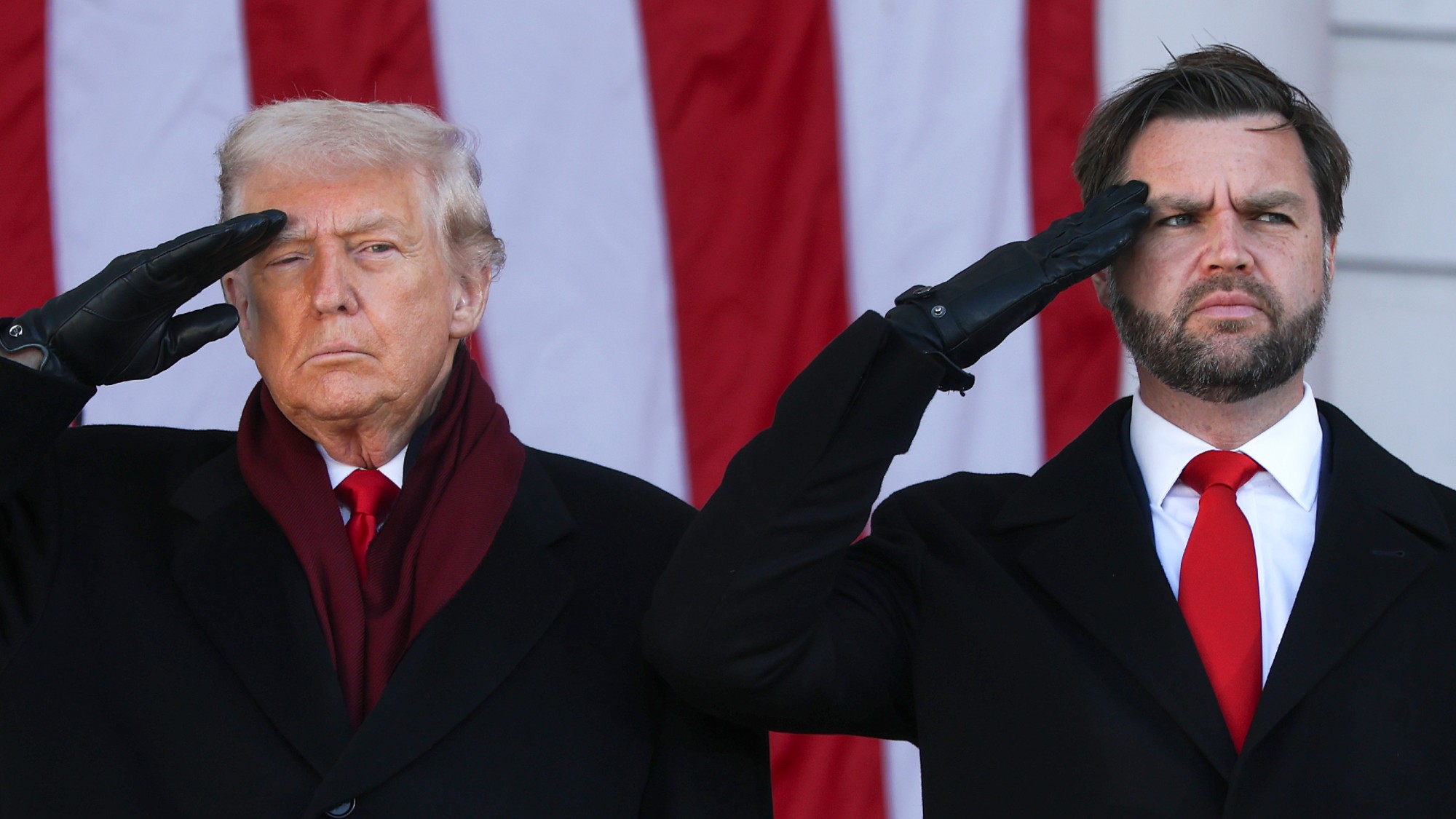Can the woolly mammoth be brought back to life?
Scientists see minor activity in extracted mammoth cells, which may be first step in recreating creature

Japanese and Russian scientists have recorded minor activity in cells taken from a woolly mammoth that roamed the Earth 28,000 years ago, marking a potential breakthrough in the quest to clone the prehistoric animal.
Researchers involved in the project claim to have taken “a significant step” towards bringing the long-extinct animals back to life, The Daily Telegraph reports, after extracting bone marrow and muscle tissue from the remains of a mammoth in Siberia.
So why do scientists want to clone mammoths?
The Week
Escape your echo chamber. Get the facts behind the news, plus analysis from multiple perspectives.

Sign up for The Week's Free Newsletters
From our morning news briefing to a weekly Good News Newsletter, get the best of The Week delivered directly to your inbox.
From our morning news briefing to a weekly Good News Newsletter, get the best of The Week delivered directly to your inbox.
Woolly mammoths died out between 14,000 and 10,000 years ago during the last Ice Age as a result of rising temperatures and hunting by humans. The Independent reports that the last population existed in the Kyttyk Peninsula of Siberia until 9,650 years ago, surviving for another 5,000 years on Siberian islands.
In 2018, researchers from Havard looked into creating mammoth-elephant hybrids in order to prevent a so-called “methane time bomb” which could cause widespread environmental devastation, reports Newsweek.
The scientists feared that the absence of large mammals “pressing down and scraping back thick layers of winter snow” in northern Eurasian and North American tundra “prevents the cold from penetrating the soil”.
The magazine adds that, as climate change melts the permafrost at an increasing rate, the leaves and other organic materials that haven't decayed will become exposed, “releasing carbon into the atmosphere in the form of the greenhouse gases carbon dioxide and methane”.
A free daily email with the biggest news stories of the day – and the best features from TheWeek.com
So can the woolly mammoth be brought back to life?
The Telegraph reports that scientists say these findings will “provide a platform to better understand extinct animal species”. However, the team, from Kindai University in Osaka, said that in order to create a successful clone of the species, cell division and multiplication is necessary; something they were not able to achieve.
One researcher, Kei Miyamoto, said: “Once we obtain cell nuclei that are kept in better condition, we can expect to advance the research to the stage of cell division.”
What did the research involve?
The team collected muscle and bone marrow tissues from the legs of “Yuka”, a 28,000-year-old female mammoth found in the Siberian permafrost in 2010.
Yuka is around 3.5 metres in length and has been well preserved by the permafrost.
Japanese newspaper The Asahi Shimbun reports that the researchers extracted the nucleus of each cell that carries biological hereditary information, and those nuclei were injected into mouse oocytes - a cell in an ovary which can undergo genetic division to form an egg cell.
The team then registered a small amount of activities in the cell, similar to behaviour that occurs just before a cell divides. Miyamoto says that while this is a major breakthrough, he told AFP that the current activity doesn’t provide much hope for a full clone. Their findings were published in the journal Nature.
“We have also learned that damage to cells was very profound,” he said. “We are yet to see even cell divisions. I have to say we are very far from recreating a mammoth.”
Nevertheless, the scientists added that the results “indicate that a part of mammoth nuclei possesses the potential for nuclear reconstitution”.
-
 Vance’s ‘next move will reveal whether the conservative movement can move past Trump’
Vance’s ‘next move will reveal whether the conservative movement can move past Trump’Instant Opinion Opinion, comment and editorials of the day
-
 Why recognizing Somaliland is so risky for Israel
Why recognizing Somaliland is so risky for IsraelTHE EXPLAINER By wading into one of North Africa’s most fraught political schisms, the Netanyahu government risks further international isolation
-
 Crossword: December 30, 2025
Crossword: December 30, 2025The daily crossword from The Week
-
 How Bulgaria’s government fell amid mass protests
How Bulgaria’s government fell amid mass protestsThe Explainer The country’s prime minister resigned as part of the fallout
-
 Femicide: Italy’s newest crime
Femicide: Italy’s newest crimeThe Explainer Landmark law to criminalise murder of a woman as an ‘act of hatred’ or ‘subjugation’ but critics say Italy is still deeply patriarchal
-
 Brazil’s Bolsonaro behind bars after appeals run out
Brazil’s Bolsonaro behind bars after appeals run outSpeed Read He will serve 27 years in prison
-
 Americans traveling abroad face renewed criticism in the Trump era
Americans traveling abroad face renewed criticism in the Trump eraThe Explainer Some of Trump’s behavior has Americans being questioned
-
 Nigeria confused by Trump invasion threat
Nigeria confused by Trump invasion threatSpeed Read Trump has claimed the country is persecuting Christians
-
 Sanae Takaichi: Japan’s Iron Lady set to be the country’s first woman prime minister
Sanae Takaichi: Japan’s Iron Lady set to be the country’s first woman prime ministerIn the Spotlight Takaichi is a member of Japan’s conservative, nationalist Liberal Democratic Party
-
 Russia is ‘helping China’ prepare for an invasion of Taiwan
Russia is ‘helping China’ prepare for an invasion of TaiwanIn the Spotlight Russia is reportedly allowing China access to military training
-
 Interpol arrests hundreds in Africa-wide sextortion crackdown
Interpol arrests hundreds in Africa-wide sextortion crackdownIN THE SPOTLIGHT A series of stings disrupts major cybercrime operations as law enforcement estimates millions in losses from schemes designed to prey on lonely users